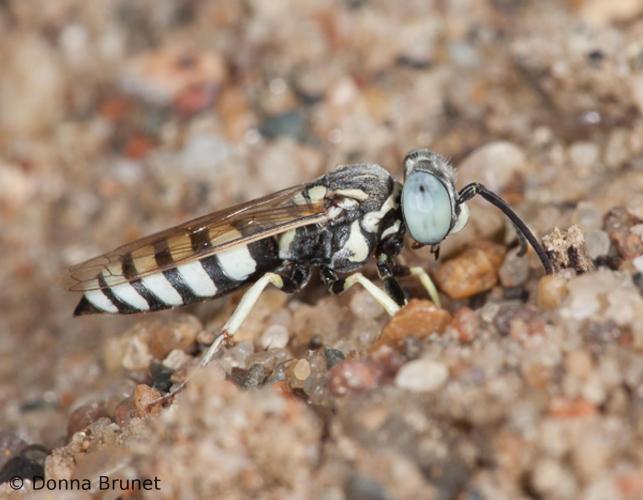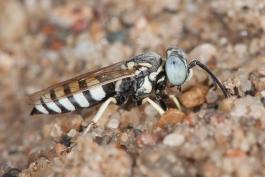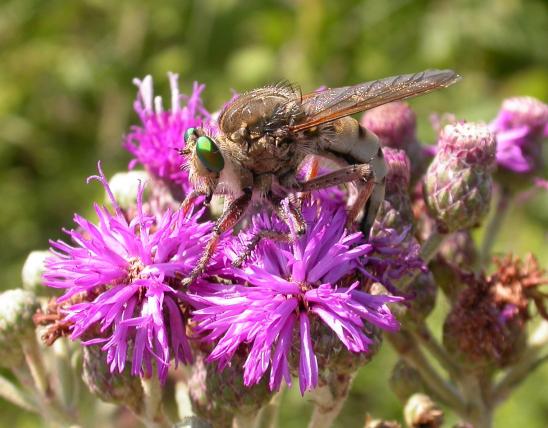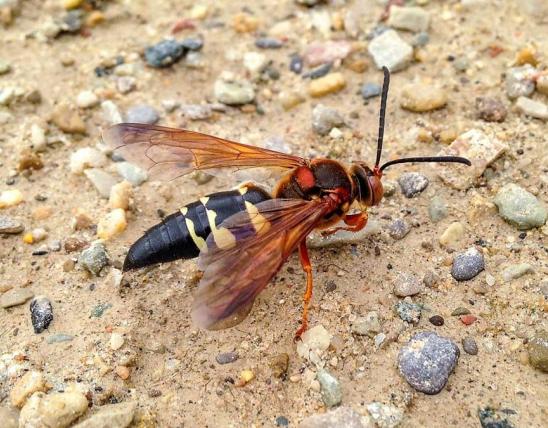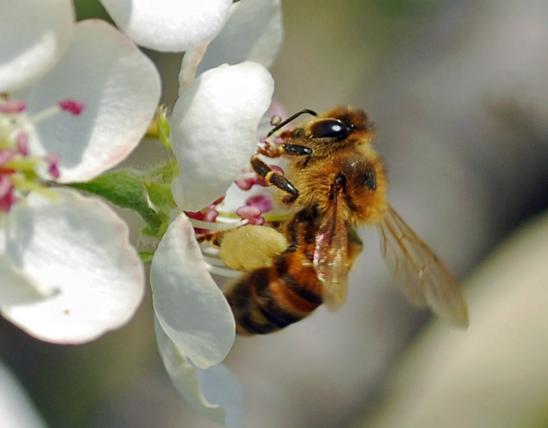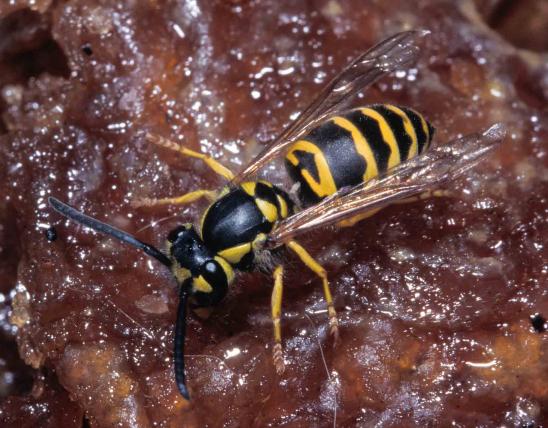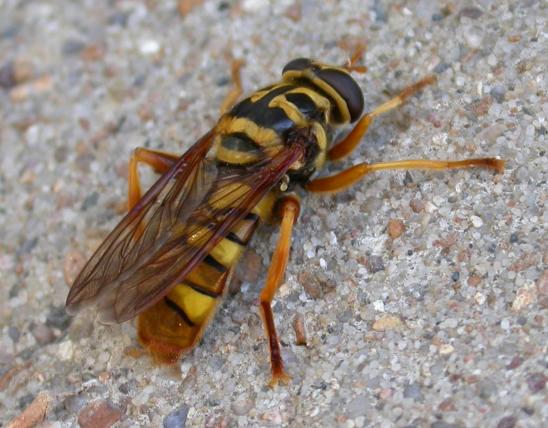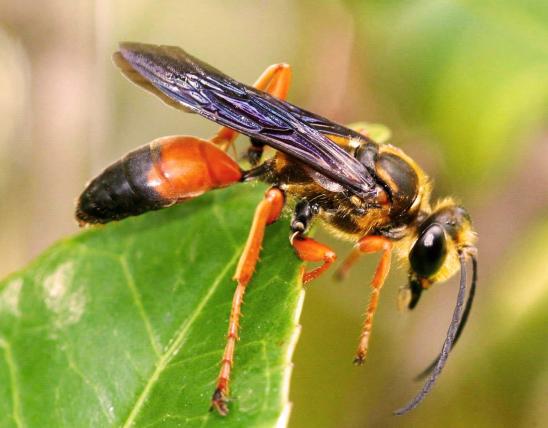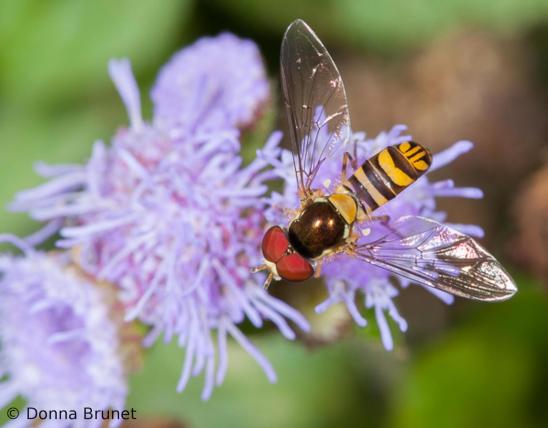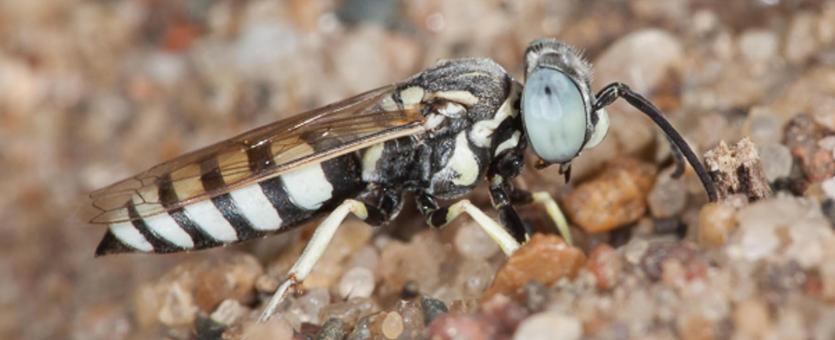
Sand wasps include many related genera and species, including all wasps in the genus Bembix. Most sand wasps are yellow and black, or white and black, often with a banded (beelike) pattern. Many have pale greenish markings. All dig nests in the ground for their eggs and provision their nests with insects, including various types of flies. Often, many sand wasps make their nests in the same small, sandy area, but they are not social or communal the way paper wasps and yellow jackets are.
One species, Bembix americana spinolas, is one of the largest and most conspicuous sand wasps. Its habit of hovering uncomfortably close to a person for the purpose of catching flies attracted to that individual is often mistaken for aggression. But these are even-tempered wasps, and it is possible to feed them out of your hand by presenting them with a living fly not quite capable of flight. Sand wasps are occasionally mistaken for hornets or yellow jackets because of their banded color pattern.
Length: about ¾–1 inch.
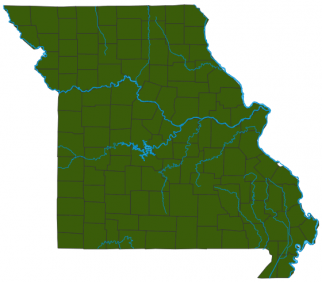
Statewide.
Habitat and Conservation
Many species and genera of sand wasps occur in Missouri. They nest in the ground during summer and spend a great deal of time flying around, hunting for houseflies, mosquitoes, or other types of flies. They are found in many habitats but most often in open, sandy areas along rivers. Nests are often aggregated.
Food
Females provision their nests with various kinds of flies, including house flies and deer flies — which ought to endear them to humans, especially since their fly hunting peaks in summer about the same time flies become most bothersome. A single developing sand wasp larva may eat two dozen flies. Adults often catch flies on the wing and are remarkably fast and agile.
Life Cycle
Sand wasps dig short tunnels into the ground in which to lay their eggs. Unlike most other wasps, their stings generally kill (and not just paralyze) the prey, so instead of stocking the cell first, then laying the egg, to retard spoilage sand wasps commonly lay the egg first, then supply fresh food to their young progressively, as the larvae grow. Once the larvae have gotten large enough, they pupate and emerge the following year as adults.
Human Connections
Sand wasps are among the many wasps that almost never sting humans. Although they are capable of stinging if mishandled or stepped on with bare feet, they are not social like bees and yellow jackets and are never fiercely defensive the way those communal insects can be.
Ecosystem Connections
A great many species of true flies, or dipterans — two-winged insects, including houseflies, gnats, and mosquitoes — are capable of incredible population surges. Sand wasps specialize in hunting true flies and thus help control their populations. In turn, many creatures feed on sand wasps and their larvae.
